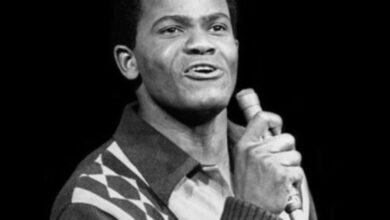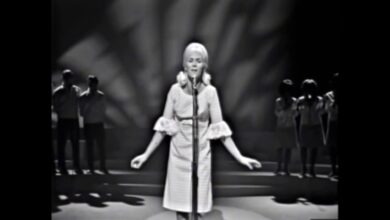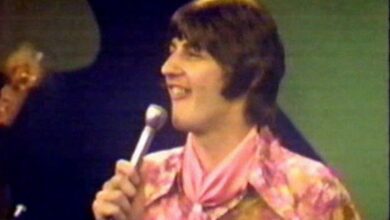The Zombies’ ‘She’s Not There’ – The 1964 Hit That Redefined British Rock and Launched a Psychedelic Revolution
In the summer of 1964, The Zombies released “She’s Not There”, a hauntingly atmospheric track that immediately set them apart from their British Invasion peers. At a time when bands like The Beatles and The Rolling Stones were dominating the charts with high-energy rock and R&B-infused numbers, The Zombies took a different approach, delivering a sophisticated, jazz-tinged sound that felt simultaneously mysterious and ethereal. Their debut single quickly climbed the Billboard Hot 100, peaking at No. 2 in the U.S., and reaching No. 12 on the UK Singles Chart. It was a breakout moment for the band, proving that British rock could be more than just raw energy—it could be moody, intricate, and emotionally charged.
The Zombies, formed in 1961 in St Albans, England, consisted of keyboardist Rod Argent, lead vocalist Colin Blunstone, bassist Chris White, guitarist Paul Atkinson, and drummer Hugh Grundy. Unlike many of their contemporaries, The Zombies were more influenced by jazz and classical music than by blues and rockabilly. Argent’s love for improvisation and complex harmonies, combined with Blunstone’s soft, breathy vocal style, gave the group a signature sound that was both elegant and unique. Though they emerged as part of the British Invasion, they never quite fit the mold of their more raucous peers, carving out a niche with a more refined, almost cinematic approach to rock music.
The inspiration for “She’s Not There” came when Rod Argent, the band’s principal songwriter, was tasked with creating an original composition for their first recording session. The band had won a talent competition that secured them a record deal, but they needed a strong debut single to make an impact. Drawing from his background in jazz, Argent crafted a song with unusual chord progressions and shifting time signatures, something virtually unheard of in pop music at the time. Lyrically, the song tells a tale of lost love and betrayal, but unlike many breakup songs of the era, it carries an air of mystery—the listener never truly learns what happened to the woman in question.
Recorded at Decca Studios in London, “She’s Not There” featured an innovative arrangement that set it apart from other songs on the airwaves. Argent’s electric piano, played with a touch of jazz sophistication, provided a hypnotic backdrop, while Blunstone’s breathy, almost ghostly vocals added to the track’s eerie allure. The rhythm section—anchored by Chris White’s fluid basslines and Hugh Grundy’s sharp drumming—gave the song an unpredictable energy, making it feel both smooth and urgent at the same time. The production quality was also ahead of its time, with an emphasis on layered harmonies and a deep, resonant sound that added to its haunting atmosphere.
Upon its release in August 1964, “She’s Not There” was an instant sensation in the United States. It debuted on the Billboard Hot 100 and rapidly climbed the charts, reaching No. 2 by December. The song’s success in America came at a time when British bands were being embraced with open arms, but The Zombies’ sound was strikingly different from the raw energy of The Kinks or the bluesy swagger of The Rolling Stones. In the UK, the song also performed well, reaching No. 12 on the UK Singles Chart, marking a strong debut for the young band.
Beyond its commercial success, “She’s Not There” played a crucial role in expanding the boundaries of rock music. Its jazz-inspired chords and unconventional song structure challenged the standard three-chord rock ‘n’ roll formula, paving the way for the more complex compositions that would define the psychedelic and progressive rock movements later in the decade. The song’s eerie, cinematic quality also prefigured the darker, moodier direction that many rock bands would explore in the late ’60s and early ’70s.
For The Zombies, “She’s Not There” was both a blessing and a curse. The song’s massive success led to international tours and widespread recognition, but they struggled to replicate its chart-topping impact. Their follow-up singles, while critically well-received, failed to achieve the same level of commercial success, and by 1968, the band had disbanded. However, their 1968 album Odessey and Oracle, released posthumously, would later be recognized as one of the greatest albums of the psychedelic era, further cementing their legacy in rock history.
The influence of “She’s Not There” extended far beyond The Zombies’ brief initial run. It inspired countless musicians, particularly in the burgeoning psychedelic rock scene. Artists like The Doors, Pink Floyd, and even later new wave acts such as The Cure and Echo & The Bunnymen have cited The Zombies as an influence, particularly for their use of atmospheric production and intricate melodies.
Over the years, “She’s Not There” has been covered by numerous artists across different genres. One of the most notable versions came in 1977 when American rock band Santana released a Latin-infused cover, transforming the song with their signature fusion of blues, jazz, and Latin rhythms. Santana’s version became a hit in its own right, reaching No. 27 on the Billboard Hot 100 and introducing the song to a new generation of listeners.
At the time of its release, “She’s Not There” coincided with the height of the British Invasion, and yet it still managed to stand out among the many chart-toppers of the era. It proved that rock music could be more than just rebellion—it could be artful, moody, and sophisticated. Even as the British Invasion faded and new musical movements took hold, “She’s Not There” remained a staple of classic rock radio, its haunting melody and unconventional arrangement keeping it relevant for decades.
Today, “She’s Not There” remains one of The Zombies’ most enduring songs. It continues to receive airplay, is frequently included in film and television soundtracks, and is celebrated as one of the defining songs of the 1960s. While The Zombies may not have reached the same level of mainstream recognition as some of their contemporaries, their impact on music is undeniable.
Looking back, “She’s Not There” stands as a testament to The Zombies’ innovation and artistic ambition. It was a song ahead of its time—moody yet melodic, sophisticated yet accessible. Decades later, its hypnotic allure remains as captivating as ever, proving that some songs are truly timeless.



